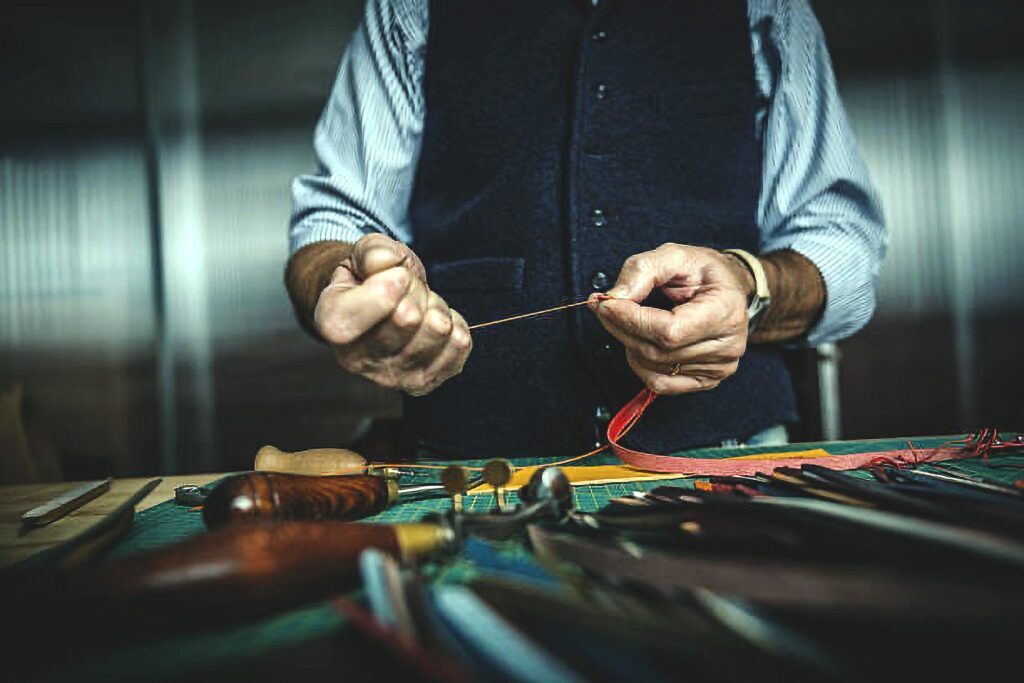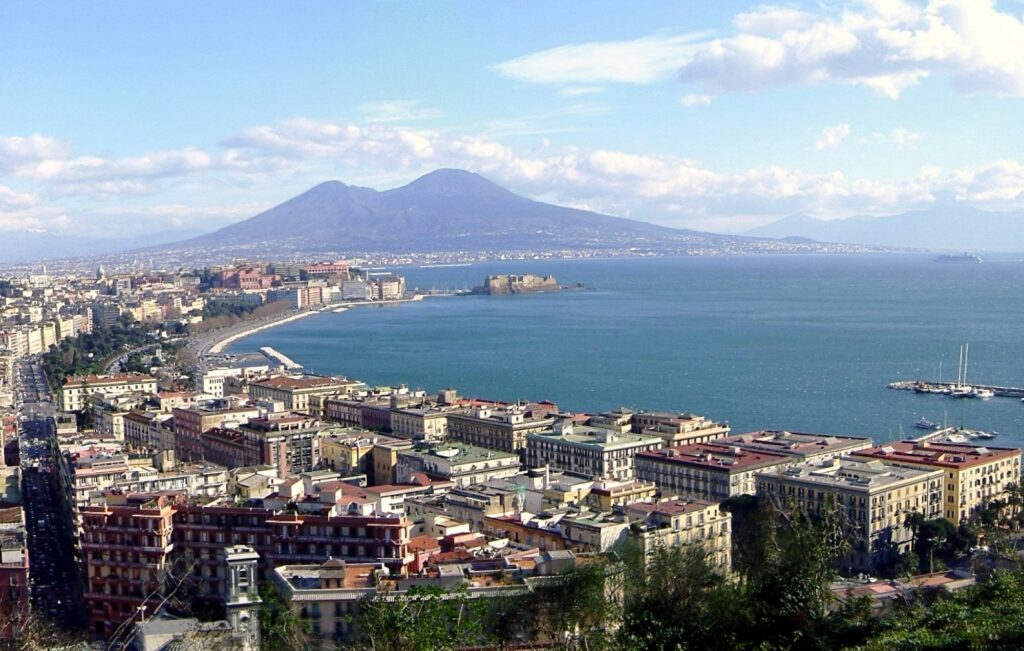Naples fascinates visitors from all over the world for many aspects that make it famous: culture and art, the charm of buildings and streets, the breathtaking landscape of the sea and Vesuvius and, of course, the rich gastronomy, led by a classic like pizza.
But in addition to these wonders, the city reserves a priceless treasure for lovers of fashion and bespoke tailoring. Let’s go find out!

The historic Neapolitan tailors, where mastery, tradition and research intertwine to create timeless classy clothes, are renowned throughout the world for the extremely high craftsmanship in creating clothes, handmade with fine fabrics and a passion that has been handed down from generations.
These shops, which thrive in the narrow streets and alleys of the historic centre, have for centuries been custodians of the sartorial tradition, particularly linked to men’s suits, and represent an essential part of the heritage of Italian fashion. In fact, they boast a long history, with deep roots, which can be traced back to 1351, when the Confraternita dei Sartori was born in the church of Sant’Eligio al Mercato.
The evolution of Neapolitan tailoring continues over the centuries until 1800, when nobles and aristocrats from all over Europe came to Naples with the request for high fashion garments, made to measure, transforming the city into a capital of style and elegance, the whose fame was increasingly expanding beyond the Alps, leading Neapolitan tailors to serve courts and lords.
Naples’ fame as the capital of men’s fashion reached its peak in the following century, when local artisans defined that style of impeccable but less formal elegance, with tasteful details that left room for original touches.

What makes Neapolitan tailors unique is their production philosophy, made of love and great attention to detail, with the utmost dedication to the research of fabrics and the choice of materials to be used for the creation of the garment, coming from renowned weaving mills, with a predilection for cashmere, virgin wool, high quality linen. The process of creating each dress involves a series of measurements to ensure that the final result fits the customer perfectly: each step is performed by hand, from cutting the fabric to the final stitching, creating a unique and flawless garment.
There are many names of great Neapolitan masters who have entered the history of international tailoring: from Pino Peluso, who brings the history of the family workshop into his atelier, where as a child he began to take his first steps between chalk and patterns, needle and thread , to Raffaele Antonelli, son of the historic seamstress of the San Carlo Theater, Giuseppina Marrazzo, and recognized among the most talented masters of high craftsmanship, to Gennaro Rubinacci, an atelier active since 1932, whose tradition is carried on by children and grandchildren. Very well known is Gino Cimmino, who has been working with needle and thread since he was 14 years old and today dresses politicians, heads of state and entrepreneurs all over the world, but there are many names who are continuing to write the history of haute couture Neapolitan, perhaps after having learned the art from their mothers, who were also very skilled seamstresses.

Today, many of these historic workshops are still in operation and, preserving techniques and traditions, represent a cultural heritage passed down from generation to generation.
Although Neapolitan tailors retain their traditional charm, they have not remained frozen in time: many of them have adopted a contemporary vision of the art of tailoring, offering more current options without compromising quality; some also produce ready-to-wear clothing lines, making fashion accessible to a wider clientele.

Naples is naturally the best place to live the experience of getting lost among the shops and artisans, observing the various phases that lead from the fabric to the dress, exchanging a few chats with the artisans and above all letting yourself be captured by the atmosphere of these ateliers. Streets such as the famous Via dei Mille are dotted with these historic workshops and signs which represent a point of reference for those seeking the warmth of tradition and the stimulus of creativity.
A visit to a Neapolitan tailor’s shop is a unique emotion, an immersion in a world of elegance and craftsmanship, but above all in the art, history and passion that define the city.

There are many other ways to discover Naples from different points of view: for example by following in the footsteps of a great writer like Elena Ferrante or delving into the mosaic streets of Southern Italy.

